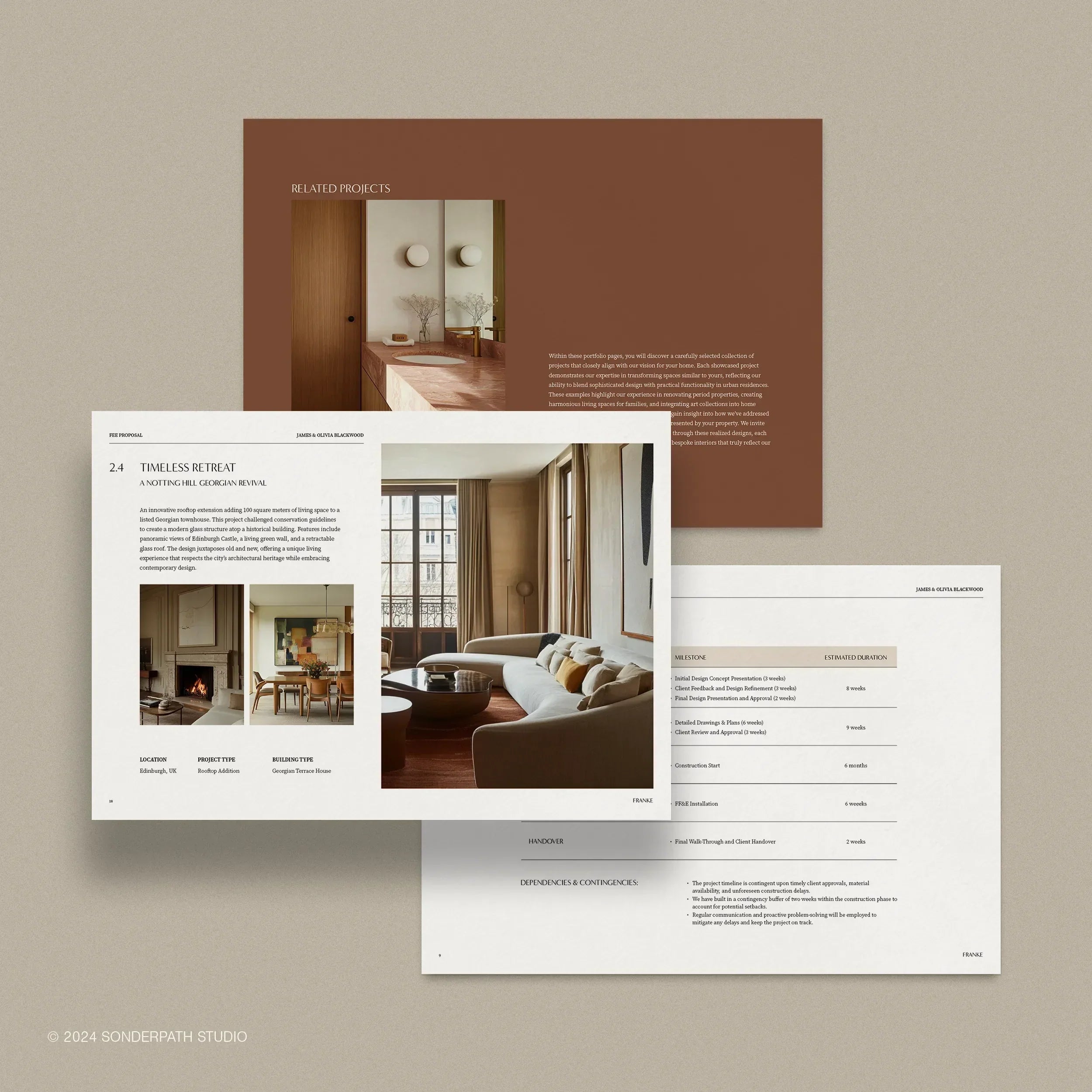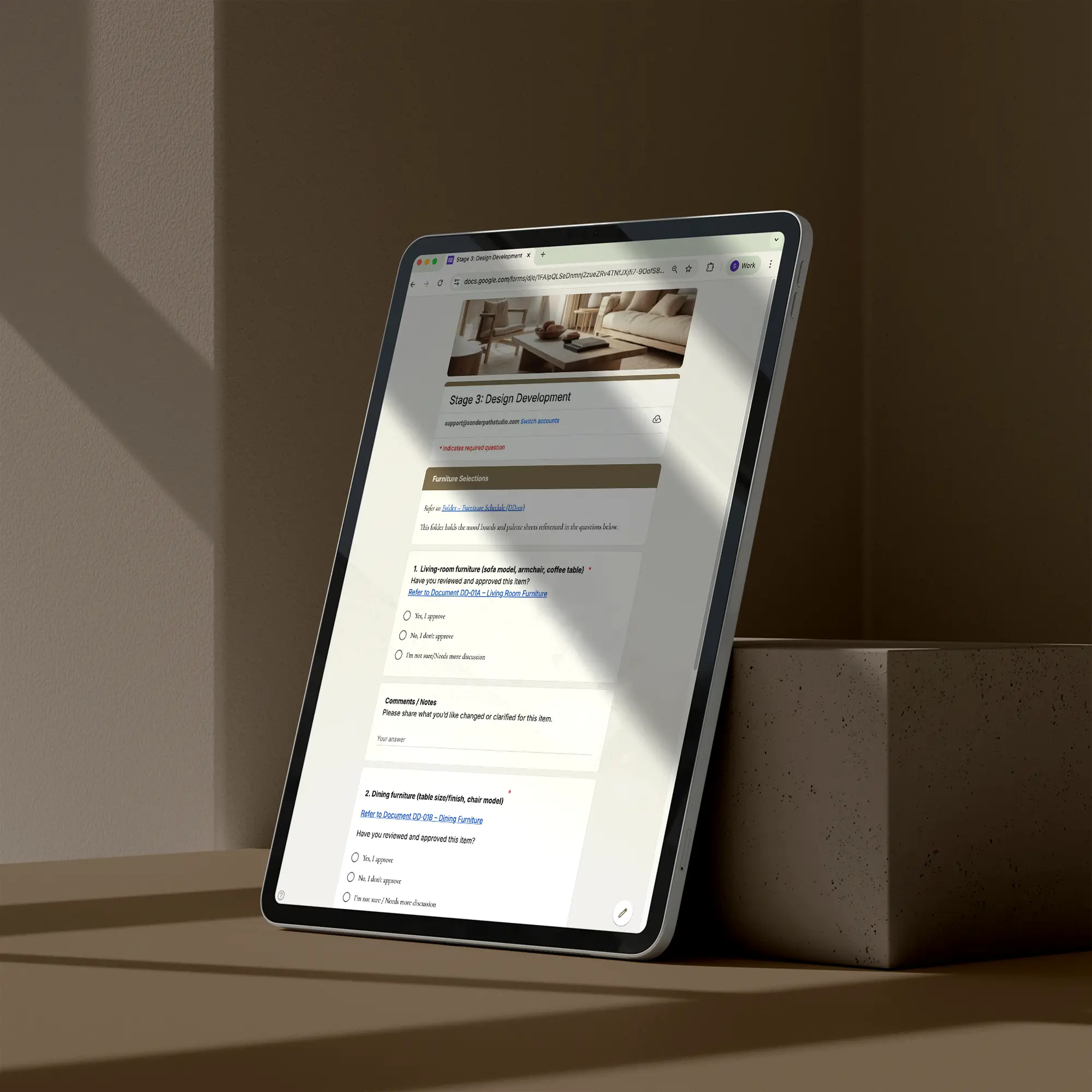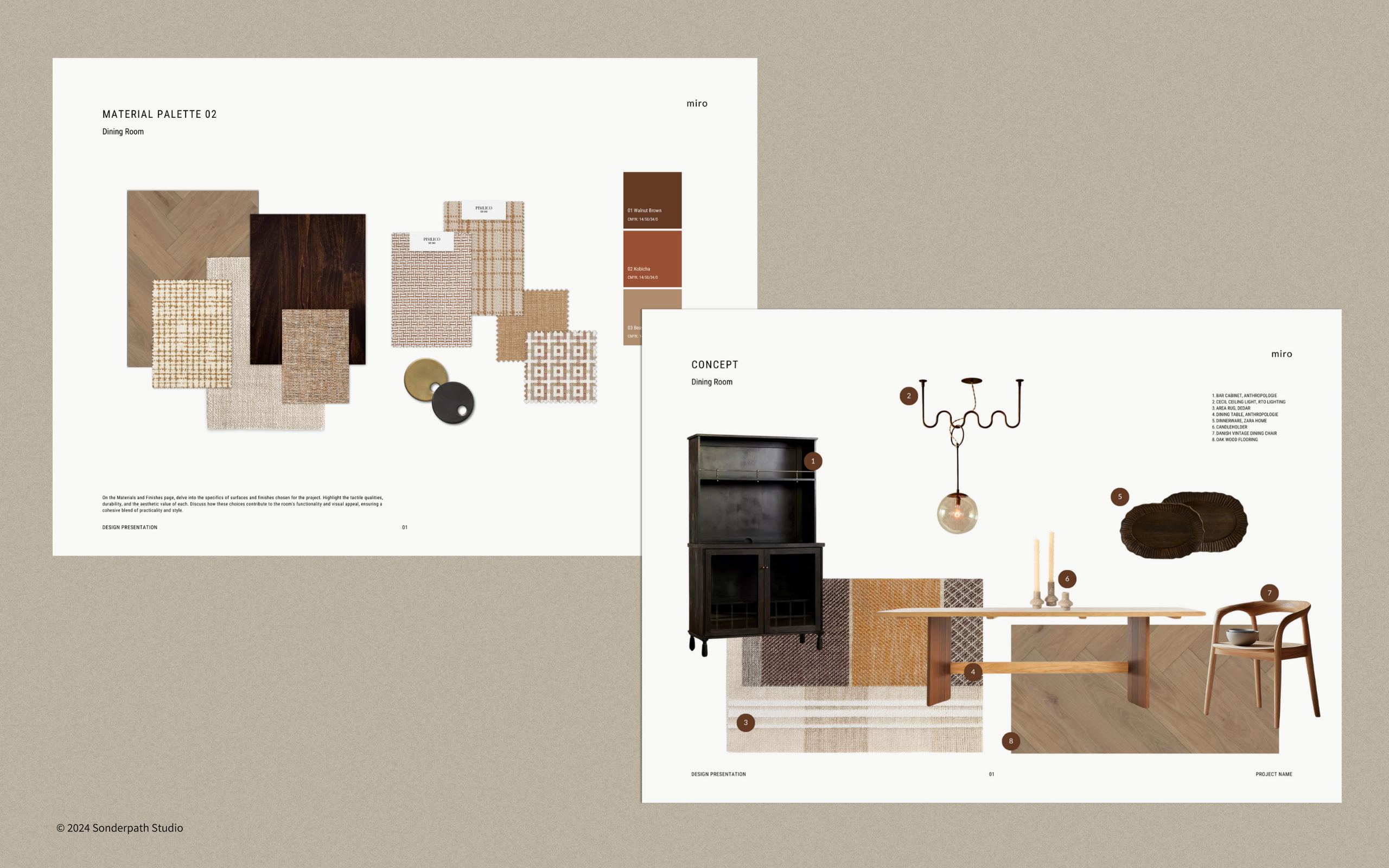The Intimacy of Service: Deepening Client Connections in Interior Design

The Intimacy of Service:
Deepening Client Connections in Interior Design
In the world of interior design, creating beautiful spaces is only part of the job. Equally important, yet often overlooked, is the art of fostering deep, meaningful connections with your clients. This is what we call the "intimacy of service" - an approach that goes beyond mere transactions to build lasting, trusting relationships. Today, we'll explore how this concept can transform your design practice and elevate your client interactions.
Understanding the Client's Perspective
Being on the service side, we often forget what it's like to be on the other side of the table. Having been in the client's position, I can attest to the hesitation and vulnerability that comes with seeking professional design services.
When I needed work done on my own home, I found myself procrastinating for weeks before reaching out to trades. The lack of transparent pricing and fear of appearing unknowledgeable were significant barriers. When I finally mustered the courage to make contact, I was fraught with concerns: Would my ideas be dismissed? Was my budget unrealistic?
This personal experience provided valuable insight into the emotional journey our clients undergo when considering hiring an interior designer. It highlighted the importance of creating a welcoming, non-intimidating environment from the very first interaction - a cornerstone of intimate service.
As designers, we must recognise that many clients, especially first-timers, feel vulnerable when inviting a professional into their personal space. They might be embarrassed about their current décor or uncertain about the design process. Acknowledging and addressing these concerns is fundamental to building trust and fostering a deep, intimate client relationship.
Building Trust from Day One
The intimacy of service begins with the very first interaction. Clear, professional communication is crucial, but it needs to be balanced with approachability. Your initial proposals and presentations should instil confidence while also putting clients at ease.
Consider starting your initial consultations with a warm-up question, such as asking clients to share their favourite element in their current space. This can help break the ice and demonstrate that you value their taste and input, deepening the connection from the start.
Pro tip: Use well-designed templates for your proposals and client questionnaires. They not only look professional but also ensure you're gathering all the necessary information to serve your clients effectively. A comprehensive questionnaire can reveal crucial details about a client's lifestyle, preferences, and pain points that might not come up in casual conversation, allowing for a more intimate understanding of their needs.
The Power of Active Listening
One of the most valuable skills in providing intimate service is active listening. It's not just about hearing your clients' words, but truly understanding their needs, desires, and concerns. Use open-ended questions in your client questionnaires to encourage detailed responses. Then, read between the lines to uncover the emotions driving their design choices.
For example, if a client insists on a particular style that doesn't seem to fit their lifestyle, dig deeper. Ask about their daily routines, how they envisage using the space, or what attracts them to that style. You might uncover underlying needs or desires that can be addressed in more suitable ways. This level of understanding deepens your connection and allows for truly personalised service.
Creating a Judgement-Free Zone
Remember, for many clients, inviting you into their home is a big step. Create an environment where they feel comfortable expressing their ideas without fear of judgement. This might mean reframing your feedback in a positive, constructive way when you encounter outdated décor or impractical ideas.
If a client shows you items that don't align with the discussed aesthetic, ask about the stories behind these pieces. This can lead to meaningful conversations about incorporating personal history into the design, resulting in a unique blend that the client will love. These conversations build intimacy and trust in your relationship.
Empathy in Action
Put yourself in your client's shoes. Use empathy to guide your interactions. Break down complex design concepts into digestible pieces. Offer reassurance when needed, and celebrate small victories along the way.
For large projects like full home renovations, consider creating a detailed timeline with photos showing the transformation process of a similar project. This visual guide can help ease client concerns and build excitement about the journey ahead, further deepening your connection.
Clear Communication Throughout
Transparency is your best friend in building and maintaining intimate client relationships. Keep your clients in the loop with regular updates. Use clear, jargon-free language to explain your process and decisions. Remember, what seems obvious to you might be completely new to your client.
Implement a practice of sending weekly update emails to all active clients, even if it's just to say, "We're still waiting on fabric samples." This consistent communication prevents clients from feeling left in the dark and reduces anxiety about project progress, nurturing the trust you've built.
It's crucial to note that most clients aren't "bad clients" - they simply don't know. As designers, it is our duty to educate. Many issues that arise during projects stem from a lack of understanding rather than deliberate difficulty. By taking the time to explain processes, timelines, and industry standards, you're not only preventing potential misunderstandings but also empowering your clients to be more engaged and informed partners in the design process.
Include clear explanations of your design process, terminology, and project timelines in your fee proposal. Reiterate this information in your welcome guides. This proactive approach ensures that clients have a clear understanding of the process from the very beginning, preventing surprises and building confidence in your professional relationship. By providing this information upfront and reinforcing it later, you're demonstrating your commitment to transparency and setting the stage for a smoother, more intimate client experience. This approach not only educates your clients but also showcases your professionalism and attention to detail, further deepening your connection with them throughout the design journey.
Respecting Boundaries
While intimate service involves deep client connections, it's crucial to maintain professional boundaries. Be clear about your working hours, response times, and the scope of your services. Respect their privacy and confidentiality at all times.
Consider setting up a system for handling urgent matters outside of regular working hours. This can help maintain a healthy work-life balance while still addressing critical client needs, demonstrating your commitment to their project without compromising your professionalism.
The Long Game
Building intimate client relationships isn't just about the current project - it's about creating a foundation for long-term success. Follow through on your promises, check in after the project is complete, and always be open to feedback.
Implement a follow-up system, such as contacting clients 3 months after project completion. This not only shows that you care about their long-term satisfaction but often leads to additional work or referrals. These ongoing touch-points keep the connection alive long after the project ends.
The Heart of Design Service
Mastering the art of intimate service in interior design is about more than just delivering beautiful spaces. It's about creating an experience that leaves your clients feeling heard, respected, and delighted. By focusing on empathy, clear communication, and professionalism, you'll not only serve your clients better but also set yourself apart in a competitive industry.
Remember, every interaction is an opportunity to deepen your client connections. So, the next time you meet a new client, take a deep breath, put on your empathy hat, and get ready to create something beautiful - both in their space and in your professional relationship. The intimacy of service you provide will not only enhance your current projects but will also pave the way for a thriving, sustainable design career built on deep, meaningful client connections.
In the end, it's this human-centred approach that transforms good designers into exceptional ones, and turns satisfied clients into passionate advocates for your work.



